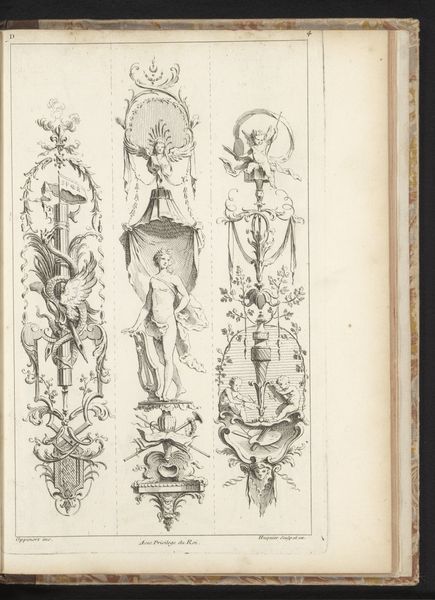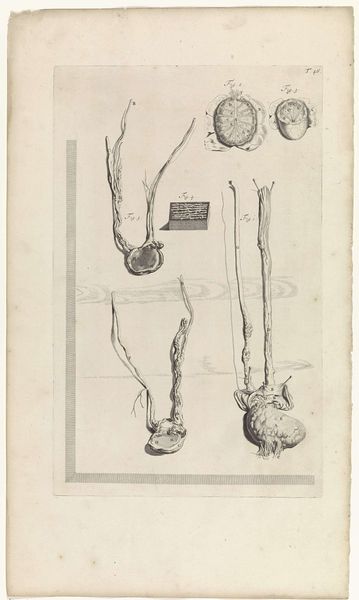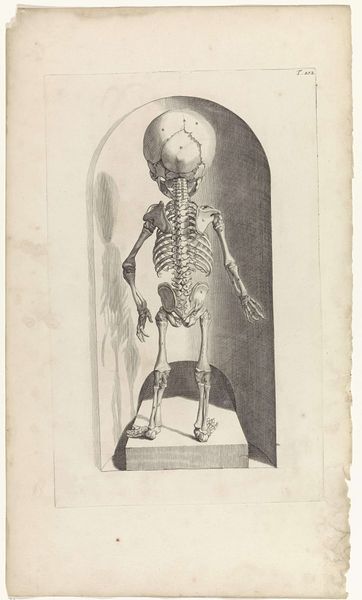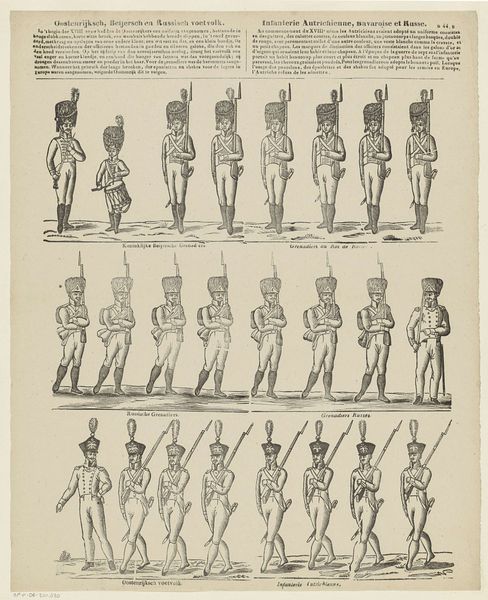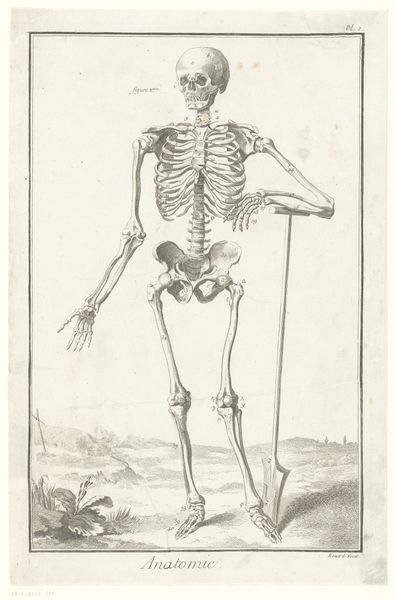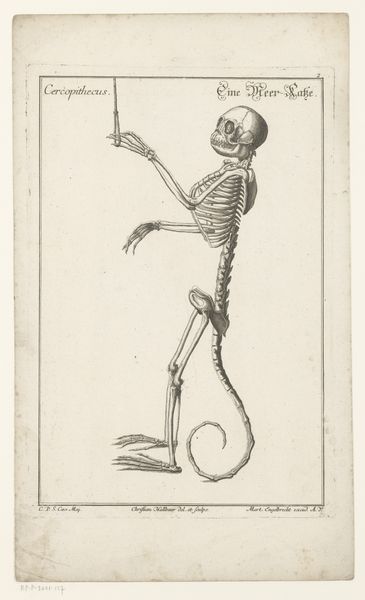
drawing, print, etching, ink
#
portrait
#
drawing
#
baroque
# print
#
etching
#
figuration
#
ink
#
academic-art
Dimensions: width 273 mm, height 438 mm
Copyright: Rijks Museum: Open Domain
Pieter van Gunst made these anatomical studies of fetus skeletons sometime before 1724, using etching and engraving. These are printing processes, which involve working an image into a hard surface, in this case a metal plate. Consider the labor involved in producing such a plate. The engraver would need a high degree of skill, both as a draughtsman and a technician. A steady hand is needed to incise lines into the metal, which would then be inked and printed onto paper. The result is a series of precise and delicate lines, capturing the fragile forms of the skeletons. The very qualities of the print – its reproducibility, its relative affordability – make it a perfect medium for disseminating knowledge. It’s no accident that this image ended up in a public institution like the Rijksmuseum. In its own way, it represents a democratization of access, a far cry from unique works of art intended only for a wealthy elite. Through the skillful application of craft and technique, the artist transformed metal and paper into a vehicle for education.
Comments
No comments
Be the first to comment and join the conversation on the ultimate creative platform.
